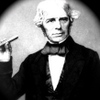Dick Trauma posted:Too bad the Church didn't include "only use wooden goblets with a flared base" as part of the catechism. Don't be so flippant, of course the Church has always tried to take care of its dependents. They regularly disseminate flyers advising only to use low-quality wooden goblets, and have done for centuries; altar boys are a dime a dozen, but if you bury one with a gem-encrusted gold-plated goblet halfway up his guts, the replacement is coming out of your salary.
|
|
|
|
|

|
| # ? Jun 5, 2024 20:09 |
|
nikitakhrushchev posted:One of the most striking things to me about aviation and space flight disasters is the way thinking can break down in such a way as to doom the flight. Like in, I think it was AF447, where the copilot kept pushing a brake down and nobody realized in time. There's always that human element that can go awry. He wasn't pushing a brake down, he was pulling back on the stick as hard as he possibly could and stalled the aircraft from flight altitude all the way into the ocean. These things are never just a single failure point, they are a cascading chain of failures. Like, AF447 wasn't just a human element gone awry. First they're flying along normally and go through a storm. Three pilots on board, captain leaves the cabin to take his scheduled rest period, plane flies through icing conditions which ices over the pitot tubes. This was a known problem with that particular pitot sensor and an advisory had gone out to have them replaced, but they hadn't been on this particular airframe yet. The pitot heaters go on to clear the icing, but for a brief period of time, the aircraft has no airspeed data, and so the flight control computers fail over from normal law to alternate law. In normal law, the FCCs won't let you stall the aircraft. In alternate law, they will. To oversimplify, Airbus's design philosophy is that flying a multiengine commercial airliner should be no more taxing on the brainpan of the guy in the driver's seat than driving a bus is, and in normal law the system tries to do everything for the pilot to the extent of preventing the pilot from having full control over the airplane. Again, it will do everything in its power to prevent you from stalling, it reduces roll sensitivity, a whole bunch of things. But now we're in alternate law, and the pilot starts trying to correct for some rolling he's experiencing, and in the course of doing this he pulls back on the stick and starts ascending at 7000 fpm, which is *really fast* especially if you're at high altitude. At this point the pitot tubes clear, the airplane has valid airspeed data again, but once you've failed out of normal law into alternate law the system won't revert upwards to normal again (probably a good design decision, if something caused a failure into a mode where you actually have to think about flying the airplane it's probably a good idea to keep thinking about flying the airplane, assuming you have pilots that can do that). So at this point, the airplane is *entirely functional*. Everything is working, there is no crisis, the malfunction has been corrected, the pilot is simply pulling back on the stick at high altitude. And he keeps doing that until he stalls the aircraft, he's got a huge angle of attack. In normal mode, the FCC would never let him reach such a high angle of attack, but he's not in normal mode. The aircraft is blaring stall warnings at him, but normal mode won't let you stall the aircraft so in normal mode the stall warning alarm actually means "Hi there! You're trying to do something dumb that will kill everybody but don't worry, I'm here to prevent that! Share and enjoy!" In alternate law, which they're in, the stall warning alarm actually means "PUSH THE loving NOSE DOWN YOU IMBECILE YOU'RE ABOUT TO KILL EVERYBODY" but the pilot is unaware of this distinction. And at some point in this, he reaches a 40-degree angle of attack, at which point the FCC's think "Whoa, we're at 40 degrees AOA? There's no way this is valid airspeed data anymore, so I'm going to turn off the stall warning alarm." So the alarm goes off. Subsequent to this, the pilot eases up on the stick a bit, the AOA drops, the airspeed data is deemed valid, the stall warning starts going off again. So now you've got a situation where doing the correct thing (push forward) causes a stall warning and doing the absolutely loving wrong thing (pull back) silences the alarm. The captain comes back into the cockpit and all three of them are trying to figure out why they're losing altitude. The PF eventually says "I don't understand what's going on, I've been pulling back on the stick this entire time and we're still falling," the captain says "No, that's wrong, push forward," but by then they don't have time to recover. Another example of this same thing was Air Asia 8501 a couple of years ago. It had an electrical fault in one of the rudder travel limiters, which resulted in a master caution alarm lighting up. This isn't a "holy poo poo get the aircraft on the ground," this is a "hey, something's wrong." To clear the warning, they turn the two flight augmentation computers on and off, first one, and then the other, with the switches on the overhead panel. That clears the warning, but then a bit later it would light up again, so they repeated this a few times. The fourth time, they decided to power-cycle the FACs not with the switch on the panel but by pulling the circuit breakers, intending to power-cycle FAC #1 and then FAC #2. But they screwed up (first by doing this at all, you're not supposed to pull those breakers in flight), and between the breakers and the panel switches they actually had both FACs turned off at the same time...which disabled the autopilot and failed the system over into alternate law. Aircraft started rolling, pilot grabs the stick and starts massively overcorrecting, winds up at a high AOA and a 54-degree bank. At one point the captain tells the copilot to "pull down", meaning to pull the nose down by pushing forward on the stick, but the copilot interprets this as a command to pull back on the stick, bringing the nose up. The captain is pushing forward like he should, but here's the thing: Airbus pilots have sidesticks for controls, and these aren't connected to each other physically. What happens if the two pilots move the sticks in different directions? Well, there's a button on the stick that lets you take sole control and lock out the other stick, but you have to push and hold it for a while, not just press it and release. And if you don't do that, what happens is that the computers just sum the inputs of both of the sticks. So the captain was pushing forward, but he wasn't pushing forward *as much* as the copilot was pulling back, so the addition of these two inputs resulted in a nose-up altitude and, again, stalling a perfectly flyable aircraft all the way into the ocean. I think you can see that there's a chain of events here that goes beyond just one idiot in the seat.
|
|
|
|
It seems like the normal law / alternate law thing is a pretty flawed system. Obviously, I know nothing about aviation, but shouldn't there be a giant light in the cockpit that lets the pilots know which one they are in?
|
|
|
|
System Metternich posted:Proofreading is for the bourgeoisie I really want to be interested in your post but holy poo poo go back and edit ( or just post it again ), its not just the odd typo
|
|
|
|
It must be a horrific feeling to be the co-pilot who's loving up, and the pilot comes in and tells you you're loving up, and then realizing that its too late and you just killed everyone.
|
|
|
|
For some reason, it's especially horrifying to me to read about these disasters where no one was trying to be reckless or malicious, but still managed to kill dozens of people through sheer incompetence. Like, if it's pure mechanical failure, then it probably couldn't have been prevented, and if it's recklessness or malice you can simply blame the person at fault, but when it's just a dumb mistake, well - that could happen to almost anyone, at any time. It means all those people died for no loving reason.
|
|
|
|
Basebf555 posted:It must be a horrific feeling to be the co-pilot who's loving up, and the pilot comes in and tells you you're loving up, and then realizing that its too late and you just killed everyone. In all cases cited, it's a fairly brief experience.
|
|
|
|
RCarr posted:It seems like the normal law / alternate law thing is a pretty flawed system. Obviously, I know nothing about aviation, but shouldn't there be a giant light in the cockpit that lets the pilots know which one they are in? There is. There's nothing inherently flawed about the having two modes. It's a fly-by-wire aircraft, there's no direct mechanical connection between the control inputs and the flight control surfaces, a computer interprets the inputs and decides how to move the controls. Normal law contains a lot of *protections*, it prevents the pilot from doing some bad things. But in order for it to have those protections and still make maneuvers properly, it needs certain data. If it stops getting that data, some of those protections go away, that's what alternate law is. There's also another alternate law that comes into play in the event of a dual engine failure, in that mode the only protection the computers will enforce is load factor (It won't let you pull hard enough to make the wings fall off, in other words). There are definitely indications about what mode you're in. A bigger issue is that Airbus's own flight crew training manuals in some cases state that pilots don't need to practice upset recovery because the flight control computers make those things not an issue. This was specifically called out in the investigation report for the AA8501 crash: quote:The upset recovery training was included in the aircraft operator’s training manual. The aircraft operator advised the KNKT that the flight crew had not [undergone] the upset recovery training on the Airbus A320, and this referred to FCTM Operational Philosophy: ‘The effectiveness of fly-by-wire architecture, and the existence of control laws, eliminates the need for upset recovery maneuvers to be trained on protected Airbus aircraft.’ Every pilot practices stall recovery to get a license. But recovering from a stall in a Cessna a few thousand feet up is radically different from a high-altitude stall in a multiengine. Periodic refresher training often just requires recovery from an approach to a stall: you start to stall the aircraft, but you don't quite do it, and then you recover from that as if you had just stalled. Not the same thing. Phanatic has a new favorite as of 19:04 on Oct 28, 2016 |
|
|
|
I hope the pilot had enough time to reach across and slap the copilot in the head. https://www.youtube.com/watch?v=u4ZgVRJ-H8U
|
|
|
|
The report on the Air France disaster is here: https://www.bea.aero/docspa/2009/f-cp090601e3.en/pdf/f-cp090601e3.en.pdf It's long and technical in places, but it also contains the complete transcript from the cockpit voice recorder and pictures from the crash recovery (no bodies). And charts of the flight data. I'm no expert but this looks bad: 
|
|
|
|
Basebf555 posted:It must be a horrific feeling to be the co-pilot who's loving up, and the pilot comes in and tells you you're loving up, and then realizing that its too late and you just killed everyone. It's been a while since I last read the report/transcript but iirc he went down still largely convinced there was an actual fault with the plane, not the airmanship e: got it: quote:02:13:40 (Robert) Climb... climb... climb... climb... Gibfender has a new favorite as of 20:25 on Oct 28, 2016 |
|
|
|
Skarsnik posted:I really want to be interested in your post but holy poo poo go back and edit ( or just post it again ), its not just the odd typo I went back and holy poo poo, I should just stop posting in a foreign language when tired, sorry. I hope it's more readable now (no guarantees though, I'm still/again pretty tired  ) )
|
|
|
|
I read somewhere that aviation risk can be visualized as several spinning discs, with a small offset hole in each one. Odds are you will miss the hole on one of them in the stack and the risk is minimal, but every now and then some poor bastard makes it through each hole and becomes another discussion in this thread.
|
|
|
|
People have always liked sticking things up their dicks. http://www.thomas-morris.uk/the-missing-pencil/ quote:Michael Creigh, a native of Ireland, aged forty-eight years, applied at the Montreal General Hospital, in December, 1862, for surgical assistance. He stated that he had a foreign body in his private parts, which caused him great pain. He was in a semi-flexed position, and said he could not straighten himself, as the body was piercing the back of his bladder. http://www.thomas-morris.uk/somewhat-silly-in-manner/ quote:Mr. Cock, at Guy’s, has recently had more than one ordinary case of lithotomy under his care; and Mr. Callaway recently was called to a very singular case. http://www.thomas-morris.uk/penis-in-a-bottle/ quote:A few months ago I was called in great haste to a young gentleman, who was in a most ludicrous yet painful condition. I found, on examination, a bottle, holding about a pint, with a short neck and small mouth, firmly attached to his body by the penis, which was drawn through the neck and projected into the bottle, being swollen and purple. The bottle, which was a white one, with a ground-glass stopper and perfectly transparent, had an opening of three fourths of an inch in diameter only: and the penis being much swollen rendered its extraction utterly impossible. The patient was greatly frightened, and so urgent for its removal that he would give me no account of its getting into its present novel situation, but implored me to liberate it instantly, as the pain was intense and the mental anguish and fright intolerable. and butts http://www.thomas-morris.uk/a-fork-up-the-anus/ quote:James Bishop, an apprentice to a ship-carpenter in Great Yarmouth, about 19 years of age, had violent pains in the lower part of the abdomen, for 6 or 7 months; it did not appear to be any species of the colic; he sometimes made bloody urine, which induced Mr. P. to believe it might be a stone in the bladder. He was very little relieved by physic; at length a hard tumour appeared in the left buttock, on or near the glutaeus maximus, 2 or 3 inches from the verge of the anus, a little sloping upwards. A short time after he voided purulent matter by the anus, every day for some time. http://www.thomas-morris.uk/a-beetroot-up-the-bottom/ quote:He had been suffering from an attack of piles, and having been informed that the disease could be cured by introducing the neck of a well-greased bottle containing some hot spirits of turpentine, he undertook to prove the remedy. But unfortunately, using nothing larger than a half pint flask, and having, as I suppose, a more than ordinarily capacious outlet to the alimentary canal, the flask slipped in, and the sphincter closed upon it. http://www.thomas-morris.uk/dismal-tail/ quote:Some students had formed the plan of playing a practical joke on a prostitute; they determined to push into her anus a frozen pig’s tail. http://www.thomas-morris.uk/glass-half-empty/ quote:In the evening of the 1st of March, 1848, a young man, very respectable in appearance, solicited Dr. Parker’s aid for his father, whom he had brought to the hospital. With many expressions, indicative of his sense of shame and mortification, he related that Loo, his father, then sixty years of age, had spent the preceding night in one of the ‘flower-boats,’ or floating brothels, on the river, with a prostitute. Under the insane excitement or intoxication produced by the combined influence of drinking spirituous liquors and smoking opium, the lecherous sufferer, in mischievous frolic, forced a glass goblet—size: diameter of brim, 2 5/8 inches; height, 3 1/2 inches; diameter of base, 1 7/8 inches—into the vagina of the companion of his sports. and vaginas http://www.thomas-morris.uk/unfortunate-injury-decade/ quote:Dr. Nottingham brought forward a case of extraordinary wound of the penis. He said it was more properly a wound of the penis received in an extraordinary way.
|
|
|
|
If you're gonna put things in your dick please use an appropriate, sterilized tool.
|
|
|
|
System Metternich posted:I went back and holy poo poo, I should just stop posting in a foreign language when tired, sorry. I hope it's more readable now (no guarantees though, I'm still/again pretty tired Thanks 
|
|
|
|
sounding is a terrible fetish
|
|
|
|
No attempt was made to remedy this serious misfortune.
|
|
|
|
Natural selection as a theory has existed for millennia, the only reason Charles Darwin went to the Galapagos was to get away from all these nutjobs putting weird poo poo up their dicks. So, he said to himself, Let's go study some birds instead. Yes, birds, that's the ticket, birds are much nicer, let's go study some nice little birds... no birds putting pencils up their dicks in the Galapagos.
|
|
|
|
|
Instead, Darwin specialized in finches cracking nuts. He was an odd duck, ol' Charlie.
|
|
|
|
Improbable Lobster posted:If you're gonna put things in your dick please use an appropriate, sterilized tool. After putting things in your dick it would appear that your tool is appropriately sterilised.
|
|
|
|
Nckdictator posted:An angle of about a half inch of the rolled lip of the glass had been broken out by efforts made by friends to remove it. true friends 
|
|
|
|
The Snoo posted:true friends I think there's maybe 3 friends of mine that I would be OK fishing something out of their dick hole for them.
|
|
|
|
Solice Kirsk posted:I think there's maybe 3 friends of mine that I would be OK fishing something out of their dick hole for them. That's three more than I have. They can go to the loving hospital. I mean, I'll drive them but that's the extent of my involvement.
|
|
|
|
everybody just take a moment and think about how many of your male friends' weiners you'd touch i got to about 20 before i remembered i'm a registered sex offender
|
|
|
|
|
Sulla-Marius 88 posted:everybody just take a moment and think about how many of your male friends' weiners you'd touch Well, that is dependent on the circumstances, but I would like to imagine I would touch any man's wiener to save their life, unless I really hated them a lot.
|
|
|
|
oh right, yeah to save their life
|
|
|
|
|
Sulla-Marius 88 posted:everybody just take a moment and think about how many of your male friends' weiners you'd touch do you shuffle?
|
|
|
|
Crossposting from the maritime disaster thread, It was recently the first anniversary of the El Faro sinking. https://newengland.com/yankee-magazine/living/profiles/el-faro/ quote:
|
|
|
|
Great article, thank you.
|
|
|
|
I used to work in the US Merchant Marine, that was a depressing read. Bad storms at sea can be scary, but that must have been terrifying to endure. Rough weather makes everything hard to accomplish, even eating is hard and sleeping is sometimes impossible from the rolling tossing you from your rack. To have the ship coming apart on you...yikes.
|
|
|
|
Mercury Ballistic posted:I used to work in the US Merchant Marine, that was a depressing read. Bad storms at sea can be scary, but that must have been terrifying to endure. Rough weather makes everything hard to accomplish, even eating is hard and sleeping is sometimes impossible from the rolling tossing you from your rack. To have the ship coming apart on you...yikes. My uncle had a ship star coming apart and they could only turn one way. If they turned the wrong way the gaps would begin opening. He also was heavily involved in the Valdez cleanup. Him and my dad have some amazing stories if you get them going. But I think there is a reason my uncle quit going to sea.
|
|
|
|
Hauki posted:That's three more than I have. They can go to the loving hospital. I mean, I'll drive them but that's the extent of my involvement. This is the objectively correct answer.
|
|
|
|
thank you
|
|
|
|
https://en.wikipedia.org/wiki/Rayleigh_bath_chair_murder Inspiration for Breaking Bad?
|
|
|
|
Dammit America, it's been 20 years and Jon-Benet Ramsey is still the 11th-most popular Wikipedia article for last month? https://tools.wmflabs.org/topviews/?project=en.wikipedia.org&platform=all-access&date=last-month&excludes=
|
|
|
|
TapTheForwardAssist posted:Dammit America, it's been 20 years and Jon-Benet Ramsey is still the 11th-most popular Wikipedia article for last month? There were multiple documentaries about the case released recently
|
|
|
|
Guy Goodbody posted:There were multiple documentaries about the case released recently CBS just did a 4 hour docu-drama on it, so that's probably the big driver.
|
|
|
|
Wasn't there something new revealed/discovered about the Ramsey case too? Or was that just the usual tabloid drivel?
|
|
|
|

|
| # ? Jun 5, 2024 20:09 |
|
Mercury Ballistic posted:I read somewhere that aviation risk can be visualized as several spinning discs, with a small offset hole in each one. Odds are you will miss the hole on one of them in the stack and the risk is minimal, but every now and then some poor bastard makes it through each hole and becomes another discussion in this thread. That's popularly called the Swiss Cheese disaster model. You've got a bunch of slices of swiss cheese to prevent disaster, and each has some holes in it, and every once in a while all the holes line up and something makes it all the way through. It's not just aviation. For example: https://backchannel.com/how-technology-led-a-hospital-to-give-a-patient-38-times-his-dosage-ded7b3688558 16-year old kid's in the hospital, he has a genetic immunodeficiency disease that causes serious bowel inflammation and chronic infection. He's on prophylactic antibiotics, the correct dose was a single pill of Septra. Instead the nurse gives him 38 and a half pills and he almost dies. How? The new electronic prescription/dispensing/electronic health record system had all kinds of things that should have prevented that. But it didn't. quote:For example, should there be maximum dose limits set in the system, so that doses several times higher than the published maximum are grayed out? UCSF decided not to set such limits. The reasoning at the time was that, in a teaching hospital with lots of patients with rare diseases, many of them on research protocols, such “overdoses” would usually be okay. A system with hundreds of “hard stops” would lead to many angry phone calls from frustrated doctors to pharmacists, demanding that they override the block. The kid, Pablo Garcia, weighed 38.6 kilograms, so the policy made the doctor order his meds in milligrams per kg. She picks the med, picks the correct dose of 5 mg/kg, the computer calculates the correct amount to dispense of 193 mg. There's no 193 mg pill made, the pills are 160 mg, so the system recommends rounding down to 1 tablet from 1.2063 tablets, and the doctor clicks "Yes," placing the order with the pharmacy. That triggered a check: the dispensed dose was greater than 5% difference from the correct calculated dose, so the hospital pharmacist can't simply approve it. Instead he texts the doc, letting her know that the she has to directly order the 160mg dose. But now there's a conflict. Since the kid's less than 40 kilograms, she needs to place an order in mg/kg. But the 5% policy requires her to directly order the correct dose in mg. So here's the first order she placed:  Here's the second one, after the pharmacist told her she needed to reorder:  quote:Do you spot the problem? Perhaps not, since it is hiding in the middle of this dense screen, which faithfully replicates the one seen by Lucca. Focus your attention on the line that begins with the number “160” inside a rectangular box. Of course, ordering such a dose threw up an alert. But: quote:Whether an automated system is monitoring the status of a nuclear power plant, a commercial jetliner, or your washing machine, perhaps the most challenging decisions revolve around what to do with alerts. On an average day at UCSF Medical Center, we prescribe about 12,000 medication doses, and order thousands more x-rays and lab tests. How should the doctor be informed if the computer thinks there is — or might be — a problem? And there's no graduation in alarms, going .01 milligrams over the recommended dose or going 3800% over it are treated the same. So now the pharmacy has a signed order from a doctor. But the pharmacists are themselves task-saturated and constantly interrupted, forced into multitasking, so the one dealing with this accepts her order and clicks through his own pop-up alert. If the order was processed locally, which it would have been if it was going to be administered soon, that means a tech would have torn 38 individually blister-packed pills off a big sheet of them, which might have given the tech pause. Then the pharmacist who checked the tech's work before it went out probably would have noticed 38 individual pills sitting there on a tray. But since it wasn't being administered for 7 hours, the order was processed remotely by a pharmacy robot at UCSF's Mission Bay facility. The whole point of this robot is to "eliminate the potential for human error." A pharmacist doesn't check the robot's work, so those were all delivered to the patient's nurse. The nurse things "Wow, that's a lot of pills." She'd only administered that medication in liquid or IV form, and thought that maybe the pills were a more dilute dose and that's why there were so many. It also occurs to her that, again, this is a research hospital with a lot of patients on clinical trials. And ultimately she trusts the EHR system: she scans the bar-code on the medication and the system verifies: Yep: 38 pills, that's the correct dose and it was ordered by this physician and signed off on by this pharmacist. quote:In Levitt’s case, the decision to put her faith in the bar-coding system was not born of blind trust; since it had been installed a year earlier, the system had saved her, as it had all the nurses at UCSF, many times. Unlike the doctors’ and pharmacists’ prescribing alerts and the ICU cardiac monitors, with their high false positive rates, the nurses usually found their bar-code alerts to be correct and clinically meaningful. In fact, under the old paper-based process, the drug administration phase was often the scariest part of the medication ecosystem, since once the nurse believed he had the right medicine, there were no more barriers standing between him and an error — sometimes a fatal one. Seriously, read the whole article. It's excellent, and has a lot in there about human factors in system design, and even aviation safety. It's a long excerpt from this book, which I can't really recommend enough: http://www.amazon.com/The-Digital-Doctor-Medicine-2019s-Computer/dp/0071849467 Phanatic has a new favorite as of 17:52 on Nov 1, 2016 |
|
|























































